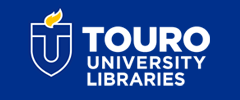NYMC Faculty Publications
Incidence and Clinical Outcomes of Perforations During Mechanical Thrombectomy for Medium Vessel Occlusion in Acute Ischemic Stroke: A Retrospective, Multicenter, and Multinational Study
Author Type(s)
Faculty
DOI
10.1177/23969873231219412
Journal Title
European Stroke Journal
First Page
328
Last Page
337
Document Type
Article
Publication Date
6-1-2024
Department
Neurosurgery
Keywords
AIS, MT, MeVo, Stroke, mechanical thrombectomy, perforation
Abstract
BACKGROUND: Mechanical thrombectomy (MT) has revolutionized the treatment of acute ischemic stroke (AIS) due to large vessel occlusion (LVO), but its efficacy and safety in medium vessel occlusion (MeVO) remain less explored. This multicenter, retrospective study aims to investigate the incidence and clinical outcomes of vessel perforations (confirmed by extravasation during an angiographic series) during MT for AIS caused by MeVO. METHODS: Data were collected from 37 academic centers across North America, Asia, and Europe between September 2017 and July 2021. A total of 1373 AIS patients with MeVO underwent MT. Baseline characteristics, procedural details, and clinical outcomes were analyzed. RESULTS: The incidence of vessel perforation was 4.8% (66/1373). Notably, our analysis indicates variations in perforation rates across different arterial segments: 8.9% in M3 segments, 4.3% in M2 segments, and 8.3% in A2 segments ( = 0.612). Patients with perforation had significantly worse outcomes, with lower rates of favorable angiographic outcomes (TICI 2c-3: 23% vs 58.9%, < 0.001; TICI 2b-3: 56.5% vs 88.3%, < 0.001). Functional outcomes were also worse in the perforation group (mRS 0-1 at 3 months: 22.7% vs 36.6%, = 0.031; mRS 0-2 at 3 months: 28.8% vs 53.9%, < 0.001). Mortality was higher in the perforation group (30.3% vs 16.8%, = 0.008). CONCLUSION: This study reveals that while the occurrence of vessel perforation in MT for AIS due to MeVO is relatively rare, it is associated with poor functional outcomes and higher mortality. The findings highlight the need for increased caution and specialized training in performing MT for MeVO. Further prospective research is required for risk mitigation strategies.
Recommended Citation
Dmytriw, A. A., Musmar, B., Salim, H., Ghozy, S., Siegler, J. E., Kobeissi, H., Shaikh, H., Khalife, J., Abdalkader, M., Klein, P., Nguyen, T. N., Heit, J. J., Regenhardt, R. W., Cancelliere, N. M., Bernstock, J. D., Naamani, K. E., Amllay, A., Meyer, L., Dusart, A., Bellante, F., Forestier, G., Rouchaud, A., Saleme, S., Mounayer, C., Fiehler, J., Kühn, A. L., Puri, A. S., Dyzmann, C., Kan, P. T., Colasurdo, M., Marnat, G., & Berge, J. (2024). Incidence and Clinical Outcomes of Perforations During Mechanical Thrombectomy for Medium Vessel Occlusion in Acute Ischemic Stroke: A Retrospective, Multicenter, and Multinational Study. European Stroke Journal, 9 (2), 328-337. https://doi.org/10.1177/23969873231219412


